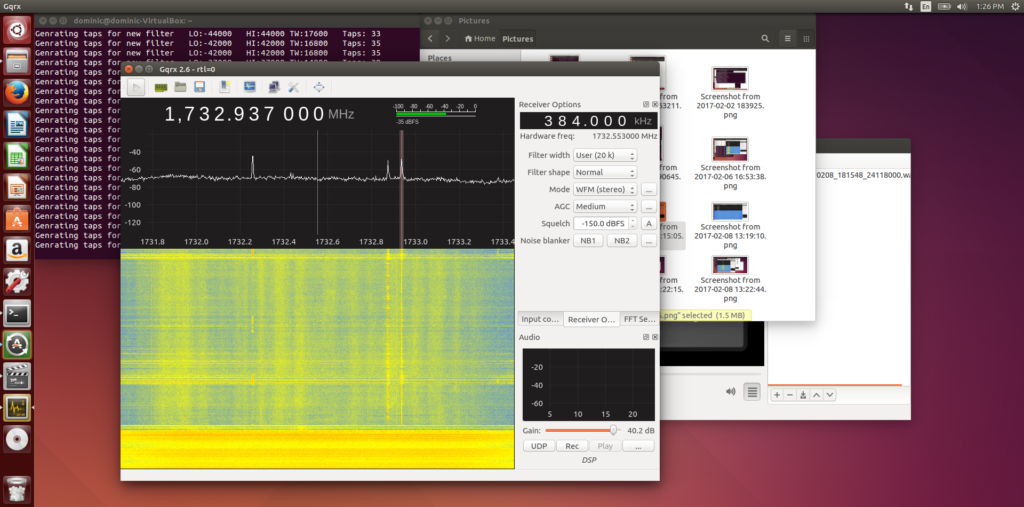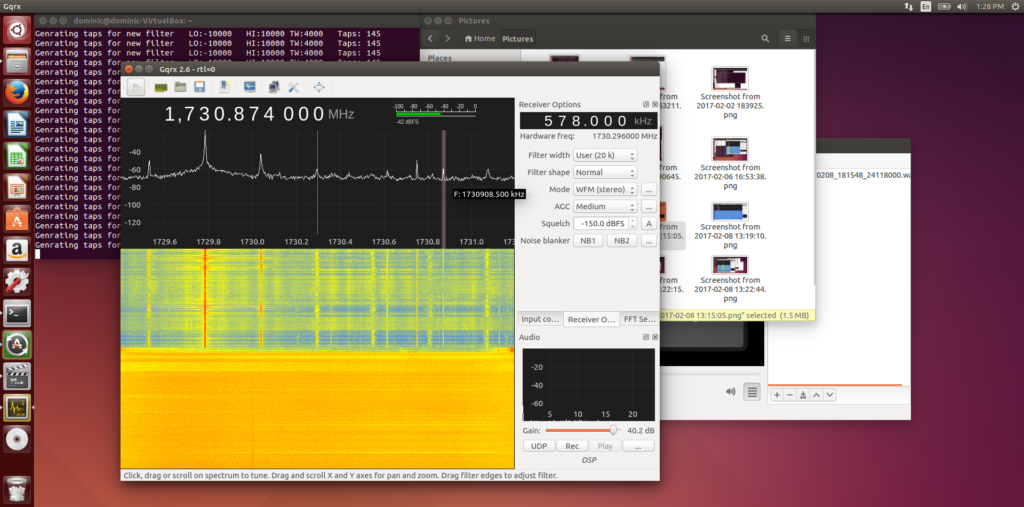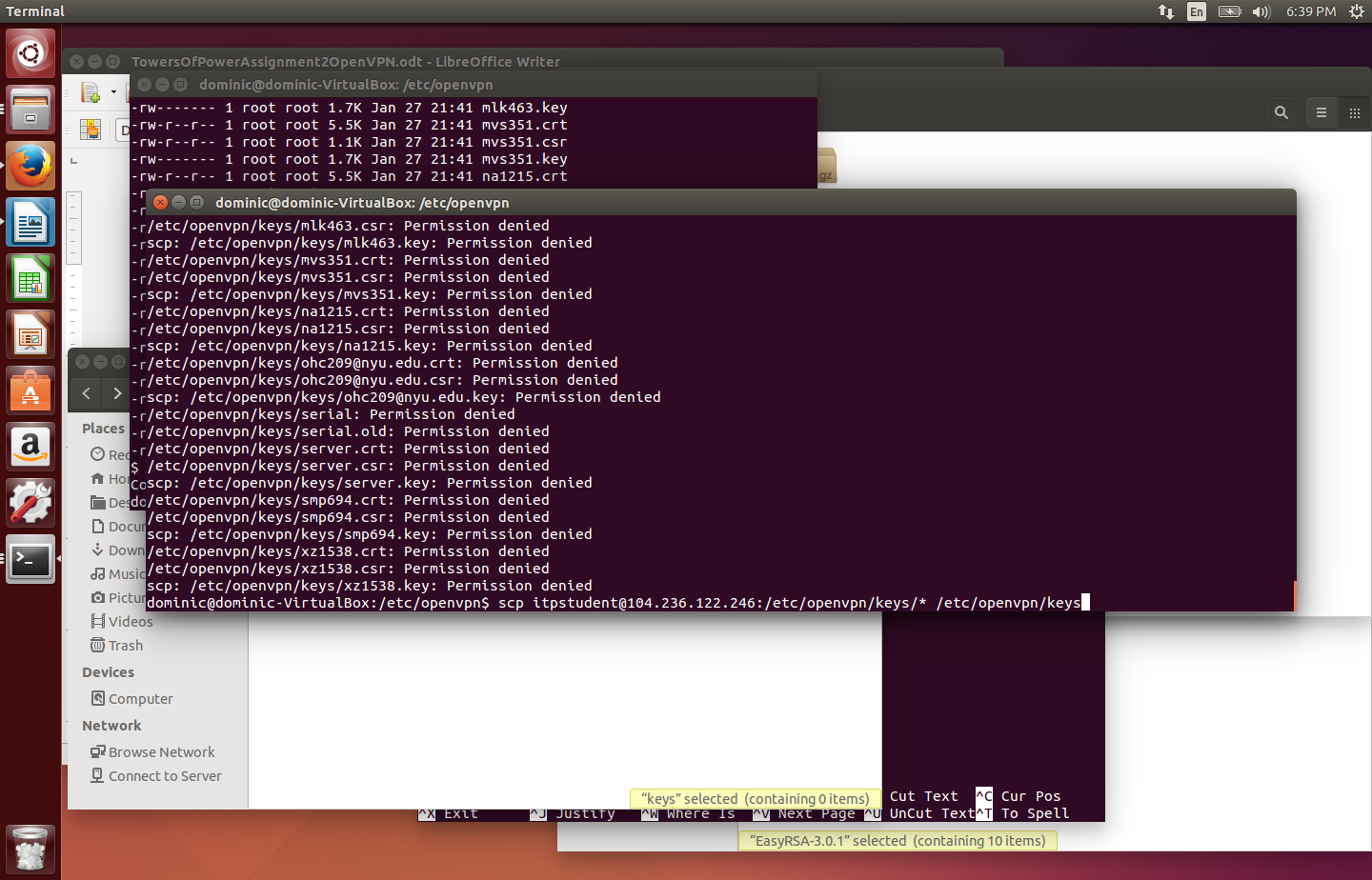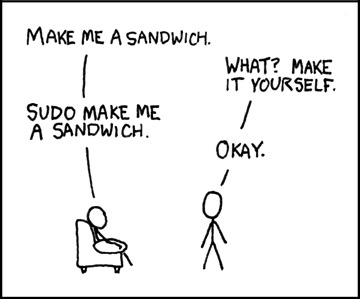We started playing with software defined radio! I’ve always been curious about them, and the in class demonstration piqued my interest even more:
Broadcasted cats! Courtesy of Dhruv’s two minute pop-up radio station at WITP 1015.2 FM, sponsored by internet memes and cats.
We were asked to look around on the spectrum and find “something interesting”. Thought it might be good to figure out my limits to start. GQRX is the application that interfaces with the SDR USB dongle. It seemed to automatically stay within the limits of the hardware, between about 23 Mhz and 1,740 Mhz. Starting from the bottom and scanning upwards, the first signal I spotted was at 23.583 Mhz:
The recording interface works pretty well in GQRX, but some of the signals were pretty quiet, especially compared to the static that surrounds it. I’ve posted some recordings, unedited besides normalization processing to boost the quiet audio to audible levels:
Moving upwards, I spotted a larger waveform and a conspicuous spike on the signal scope. I needed to adjust the receiving bandwidth to properly hear what was going on: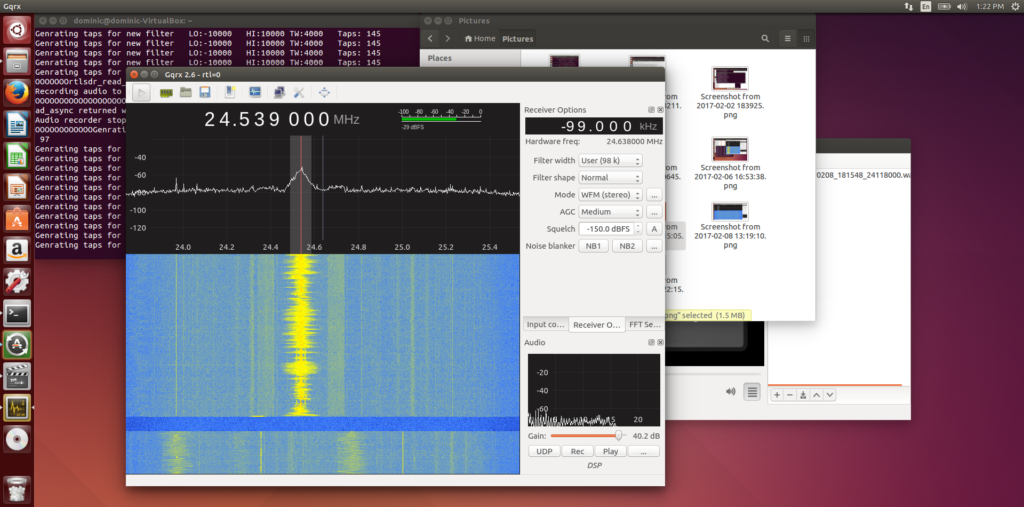
Wasn’t expecting music this clear so low on the spectrum, as traditional FM broadcasting does not go as low as 24.539 FM. This could be something like broadcasting muzak for a elevator, building, or shop.
I decided to switch things up, and start from the highest frequency and then work down. There was a lot of static at first, but then I spotted a possible signal:
At first, it sounded like nothing. Not nothing like just static, but nothing like no noise tucked inside of a lump of static. I was going to move on to the next signals when I thought I heard something.
People talking? I looked around and realized that it was a briefly delayed version of what was happening in the room I was in. I had to boost it REALLY loud for you to hear it as it is now. I tried refining the SDR settings and searching nearby bands:
I thought I was going crazy, but I was sure I was hearing audio of the room I was in. Luckily Dhruv was there to consult, and suggested that the wireless mics setup off of the floor could possibly be the cause. I shared this with Grau, who may be expounding on it in his post.
While I was talking with Dhruv, police officers came onto the floor. No one was sure why they were there, so he suggested tuning into their radios to find out. He showed me the following website to find the frequency for the local police radio band: http://www.radioreference.com
Interesting to hear, it almost seems like the signals switch back and forth between bands. I’m not sure if that was two different devices each sending on their own channel, or perhaps some kind of channel hopping system.
It was fun going in blind on the frequencies. I had decided not to google anything at first on purpose, but the radio reference is really interesting and I’ll be searching around for fun frequencies to look at. Especially things like wireless mics or cameras!


